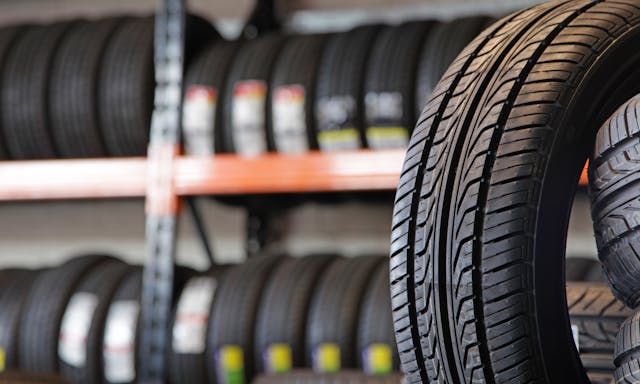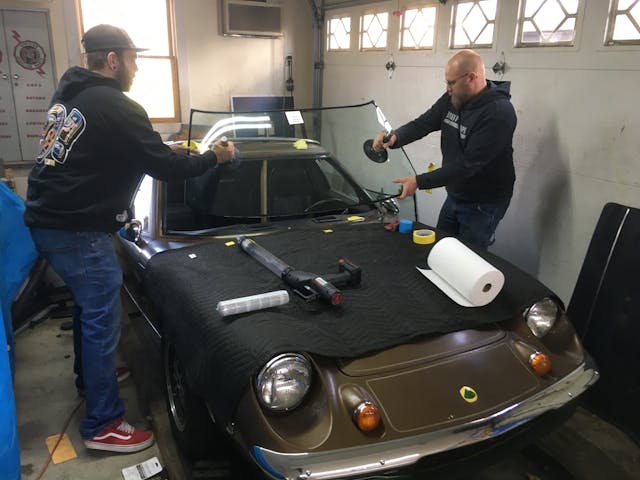5 car parts that look the same despite changing dramatically
Look at the car in your garage. Now look at a Ford Model T. You’re likely seeing two cars that look nothing alike. Well, at least on the macro level. Get down to eyeballing individual pieces and parts, however, and it won’t take long to spot a few bits that actually look pretty close to the same. Are there really car parts that haven’t changed in over a century of production? No, not really, but there are at some that look like they haven’t. Let’s take a peek at five such pieces.
Tires

Treaded, rubber, and round. Simple right? Not so fast. Tires have advanced in so many ways, but just the highlights are compound and construction. The chemical makeup of the tires we buy today is a complex and artfully crafted mix designed to balance wear, grip, noise, and comfort. Tires 100 years ago were still tube-type and were good—if they stayed round and rolling for an extended period of time. Tire construction went from bias ply, where the bands of reinforcing material under the tread are laid at 45 degrees to each other—on a bias—rather than the modern method of radial construction, which puts the reinforcement into the tire both around the circumference and also from bead to bead. This modern design allows for additional tire flex, which can be tuned to fit various situations.
Windshields

It’s clear and keeps the junk flying up from the road from hitting you and your passengers in the face. Well, at least that is what it did back then. Now, windshields are stronger than ever, clearer than ever, and more advanced than ever. Safety glass of today is something many take for granted, and it is likely because many drivers have never seen what happens to plate glass windows in the event of a crash. Early safety glass was even worse.
Now windshields are embedded with sensors and antennae, along with defroster coils and tint. Yes, it’s still a curved piece of glass, but the similarities end there.
Body panels

The idea of body panels took a while to evolve, as the automobile was a novelty for years prior becoming a near necessity. As cars became more reliable, their styling and larger function gained importance and thus body panels became critical. The flat steel panels were structured with wood beneath them, but now the panels themselves are bent and folded in such ways that they often brace themselves. They are also designed to behave with certain manners in the event of a crash, rather than being built as if they were going to be statically installed on a house.
The skin of a car is still the skin of a car, but now exotic materials are more popular than ever. Early cars had all kinds of crazy stuff for body panels, and to be honest, we are happy that carbon fiber, aluminum, and plastics won out over patent leather and wood.
Drum brakes
“If it ain’t broke, don’t fix it” is something many people have learned through experience. The same can be said for OEM carmakers. Drum brakes are not sexy and have their drawbacks but in the grand scheme of things are simple, dependable, cheap to produce, and easy to maintain. Look at vintage cars and you’ll likely see some version of a drum brake. Model A Fords only have three springs per brake backing plate, and the shoes are actuated by a wedge pushing the shoes out in unison.
Modern drum brakes have varying designs that require differing solutions for the one brake shoe over the other, and they are hydraulically actuated with a whole host of springs and levers to incorporate various functions. Are they still drum brakes that function the same? Yes, but once you pull the drum you’d be hard pressed to say they are the same as they have always been.
Shocks

The automobile was born from wagons, and even back when the horsepower came from real horses we knew that solid suspension was a bad idea. Roads were even worse than they are today, and undamped springs can make for a wild ride. The idea of shocks was not something new for cars, but cars really advanced the technology. From lever shocks to the modern tubular design, their function centers around the idea of pushing a fluid through a metered orifice in an effort to slow the motion of the spring or sprung part. What used to be a simple hole has advanced to highly-tunable shim stacks and even electronically adjustable designs that adapt automatically on the fly without the driver even realizing it.
***
Check out the Hagerty Media homepage so you don’t miss a single story, or better yet, bookmark it. To get our best stories delivered right to your inbox, subscribe to our newsletters.



Brake drums on the rear of the Tacoma never made sense to me. The Nissan Frontier had discs on the rear for a decade+ before the Tacoma was blessed with 20th century brake technology.
Drive belts and cooling system hoses. Both last much longer than what they replaced.
car batteries
Very good article! Good points were made.
Steering wheel?
The simple oil dip stick .
A part of a car that looks the same, functions the same and is located in the same areas is the Schrader valve. It may still be made by the same company.
Windshield wipers. Especially now with electric motors. The old vacuum wipers would go very slow when you were accelerating and you had to let off on the gas pedal to get a couple of quick wipes then back on the floor.
Ha ha!
When I was a boy, we had a 1950 Ford Custom. There was a relatively steep hill near our home called Bearden Hill. When we went up that hill, the wipers quit working.
Made me look up that old familar place if it was in Knoxville. Picture shows a long vacuum robbing hill: https://en.wikipedia.org/wiki/Bearden,_Knoxville#Location
Cheers!
I had a 53 ford pu in high school, when it snowed and you were going up a hill I opened the drivers door and stepped my left foot on the running board so I could see where I was going. the good old days!
Mufflers!
They used to be mostly under the floor, and then moved to the firewall: the hydraulic brake master cylinder. It also evolved from a single chamber to the now used dual chamber (with subsequent separated front and rear brake systems). Functionally the master cylinder still uses the same principles.